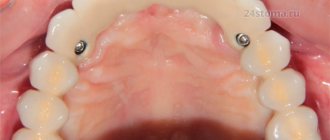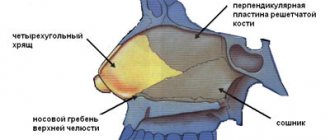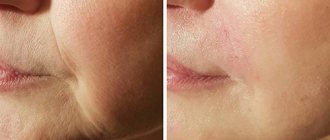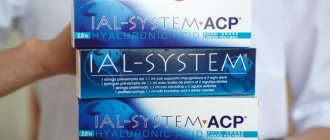It's one thing when the blush on your cheeks appears and quickly disappears, as, for example, after a winter walk. And it’s quite another thing if it spreads across the face, does not go away for a long time and is also complicated by various rashes on the skin. We learned more about such a disease as rosacea at the X National Congress “Plastic Surgery, Aesthetic Medicine and Cosmetology”.
At the congress, many issues of dermatology were raised, including diagnosis, mechanisms of development and treatment of rosacea (rosacea). In this article we present excerpts from the report of dermatologist, cosmetologist, doctor of medical sciences Elena Arabian, which will help to better understand what rosacea is, what factors can provoke the appearance of this disease and how it is treated today.
When to sound the alarm
The main symptoms for diagnosing rosacea are persistent erythema (redness of the skin), which usually appears in the central part of the face and lasts more than two months, and is also characterized by concomitant dilation of small vessels of the skin and the formation of inflammatory elements, rosacea.
Previously, rosacea was said to be a vascular disease of unknown etiology, and it can be triggered by many factors. “Now there is a completely definite evidence base that rosacea is a chronic inflammatory dermatosis,” says Elena Arabian.
Studies show that rosacea in our country is less common than diabetes, but more common than asthma and psoriasis. And, for example, in the USA every tenth patient comes to the clinic with symptoms of rosacea to a dermatologist.
Causes of xanthelasma and risk groups
Xanthelasma is a benign formation that affects the skin of the upper and lower eyelids of both eyes.
Xanthelasma initially manifests itself as single plaques. If there are a large number of them, plaques can merge into extensive yellow formations of varying degrees of intensity - xanthoma - and significantly worsen a person’s appearance. Apart from being visually unattractive, xanthelasma does not manifest itself in any way. There is no pain, no itching, no peeling, or any other unpleasant sensations. Considering the main cause of xanthelasma, risk groups are identified among people susceptible to xanthelasma:
- people over 45–50 years old;
- women (xanthelasma more often spoils the appearance of the fair sex, although similar cases are also recorded in men);
- people with chronic diseases, one way or another associated with impaired fat metabolism and metabolic dysfunction: diabetes, obesity, arterial hypertension, diseases of the thyroid and pancreas, liver, etc.
First roles
In recent years, it has been believed that the leading roles in the appearance of rosacea are played by innate immunity, microbiota and the inflammatory process. Innate immunity triggers the production of antimicrobial peptides and proinflammatory cytokines. “With rosacea, their levels increase sharply. For example, the activity of antimicrobial peptides cathelicidins increases 10 times, and the level of peptidase increases 10 thousand times! - continues Elena Arabian. — Flora also works in a special way. Staphylococcus is of great importance here, but the leading role is played by mites of the genus Demodex. Together with bacteria, fungi and viruses, they are a representative of the microbiome, but with rosacea their increased density is noted: it has been proven that they provoke inflammation. One of the reasons why this microscopic mite becomes pathogenic is low skin moisture.
Factors that provoke exacerbation of chronic rosacea are considered to be stress, extreme cold or heat, alcohol intake, hot and spicy foods. Recently, soy sauce and vanilla have been added to the list of food provocateurs. But coffee and drinks containing caffeine have been rehabilitated.
Concomitant diseases play a major role in the development of rosacea. First of all, we are talking about gastrointestinal problems, celiac disease, Crohn's disease, infection caused by Helicobacter pylori, irritable bowel syndrome - these are all background conditions. Recent studies have shown a connection with hypertension, cardiovascular pathology, anxiety disorders, depression and diabetes. Considering all these factors, it is clear that patients with rosacea require a multidisciplinary approach.”
Clinical symptoms of rosacea are redness of the skin, the appearance of telangiectasia (dilation of small vessels) and various rashes: papules, pustules, fimas (inflammatory elements, rosacea, bumpy formations).
Red spots under the eyes (around the eyes)
Our skin is one of the first to react to any negative changes in the body. The more sensitive the skin, the faster and brighter the signs of any disease appear on it. The thinnest layer of skin is located in the area around the eyes. As a rule, the skin in this area is uniform in color, one tone lighter or darker than the base color of the facial skin. But sometimes red spots appear under or around the eyes, which can signal a number of diseases of the visual organs or the entire body as a whole.
Causes of red spots under the eyes
Various factors can cause the appearance of red spots around the eyes, including:
- Stress, lack of sleep and nervous tension. When the daily routine is normalized and the emotional state is restored, the redness disappears
- Dermatological problems. For example, with eczema and dermatitis, the skin around the eyes not only turns red, but also flakes and may also become crusty.
- Kidney diseases - stones, kidney failure and other pathologies make themselves felt by the appearance of bags, swelling, as well as redness or darkening under the eyes
- Inflammatory processes - abscesses and phlegmon (purulent inflammation). In such cases, redness is accompanied by increased body temperature.
- An allergic reaction in which in addition to redness there is also itching
- Vitamin deficiency and unhealthy lifestyle: lack of exercise, lack of air, poor diet and bad habits often contribute to the deterioration of skin condition
- Congenital skin abnormalities.
Do not forget that only a specialized specialist can establish the true cause of the disease and help get rid of unpleasant symptoms.
Treatment algorithm
“Today, the understanding of the causes and mechanism of development of rosacea is different than 5-10, and even more so 20 years ago,” states Elena Arabianskaya, “therefore, the approach to treatment is different. The diagnosis is made on the basis of prolonged erythema and fim. Therapy depends on the clinical manifestations of the disease and the nature of the rash. For treatment, we already had good drugs: we had azelaic acid, metronidazole, but now topical ivermectin is becoming the leader. It gives a double effect. Its pronounced antiparasitic effect allows you to reduce the population of skin mites, but at the same time (which is very important) it has anti-inflammatory properties. This drug works great in the presence of inflammatory elements (papules, pustules), but redness may still remain. Therefore, it is recommended to act on receptors to blood vessels. For this purpose, brimonidine tartrate was used, which was used to treat some forms of glaucoma. It starts working in 30 minutes and wears off in 12 hours.”
Laboratory tests for microorganisms and demodex mites are not carried out for either acne or rosacea!
As for hardware techniques, so-called vascular lasers are relevant here. They not only have an anti-inflammatory effect, but also reduce the density of mites. Diode, alexandrite, neodymium lasers and broadband pulsed light (IPL) can be used for the same purpose.
Auxiliary methods of treating the disease are microcurrent therapy for lymphatic drainage, cryotherapy for vasoconstrictor and anti-inflammatory effects. Treatment of concomitant diseases also plays an important role. In general, combination therapy gives good results.
Principles of treatment and correction of facial furrows
Pronounced wrinkles on the face are quite difficult to correct with cosmetics. But cosmetics can be used to stop the progression of furrows - in particular, to moisturize the skin and protect it from external factors.
For example, apricot extract (Prunus Armeniaca Extract) gives a good effect for correcting tear troughs. It contains a lot of vitamin E (helps improve the elasticity and firmness of the skin, creates an antioxidant effect and helps reduce the depth of wrinkles), vitamin A (has a pronounced anti-aging effect, helps even out the complexion and reduce signs of aging) and vitamin C (enhances the effect of previous vitamins). Masks based on apricot kernel oil (Prunus Armeniaca Kernel Oil) can be used to nourish and moisturize aging skin.
With pronounced stretching and sagging of the skin with the presence of deep wrinkles, the results of peelings will be relatively weak. In this case, several methods should be combined, including minimally invasive injection or surgery.
Wrinkles on the face can be partially corrected using botulinum toxins . They block neuromuscular transmission and relax the muscles in a given area. It is important to understand that with pronounced age-related changes in the skin and underlying facial structures, the effect of this method may be insufficient.
Deep nasolacrimal grooves can be corrected by injections of fillers based on hyaluronic acid, collagen or the patient’s autologous (own) fat . They temporarily fill wrinkles and deep furrows, can correct the oval of the face, and make the surface of the skin more even and smooth. The effect lasts until the filler is completely destroyed.
Threads can be installed in some areas of the face and neck . Reinforcing threads, due to a special mechanical effect on tissue and stimulation of metabolic processes, provide the so-called reinforcing effect (moderate lifting + biostimulation). Lifting threads tighten the skin more, but do not have a biostimulating effect. The choice of threads depends on the condition of the patient’s skin, aesthetic goals and the experience of the specialist.
In some cases, PRP therapy (plasma therapy) - injection of platelet-rich plasma into the tissue. The use of autologous plasma from the patient can reduce the number of possible side effects, provided that the technique is followed.
Deep wrinkles can be radically eliminated with the help of surgery - a circular facelift (facelift). This operation is quite traumatic and carries certain risks.
Laser techniques that are aimed at remodeling the dermis can also significantly correct tear and other facial grooves First of all, this is deep fractional photothermolysis. By working with the bottom of the furrow (crease) using a fractional laser, creating micro-zones of influence at a depth of 1 mm or more, it is possible to initiate the synthesis of a new structural matrix of the dermis, while destroying the old one, which has partially lost its mechanical properties.
ablative fractional photothermolysis (Acupulse, Ultrapulse) is more suitable The fact is that ablative fractional lasers make it possible to obtain the effect of “tightening” the skin: when they act on a large area of the skin where wrinkles are located, the area of this area is reduced due to contraction of collagen and partial evacuation of the dermal substance evaporated by the laser. With a large percentage of coverage, you can achieve up to a 30% reduction in area, which causes skin tension and, as a result, straightening of the furrows.
Fractional lasers do not affect the mechanical causes of furrows, in particular, the work of facial muscles. Therefore, their combination with other techniques, for example, botulinum toxin injections, is optimal.
Strengthen the barrier
“Another important point is the condition of the skin barrier,” continues Elena Arabian. — In patients with chronic rosacea, transepidermal water loss is very pronounced, which leads to increased inflammatory response, degradation of the intercellular matrix and collagen structures — this contributes to early skin aging. The vast majority of people suffering from rosacea have sensitive skin, so they need adequate daily skin care. These products are based on caffeine, which improves microcirculation, glycerretinic acid derivatives, which restore the skin barrier, and sun protection.









